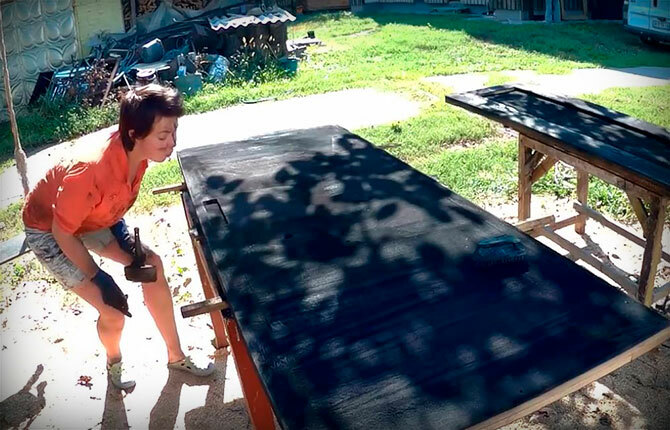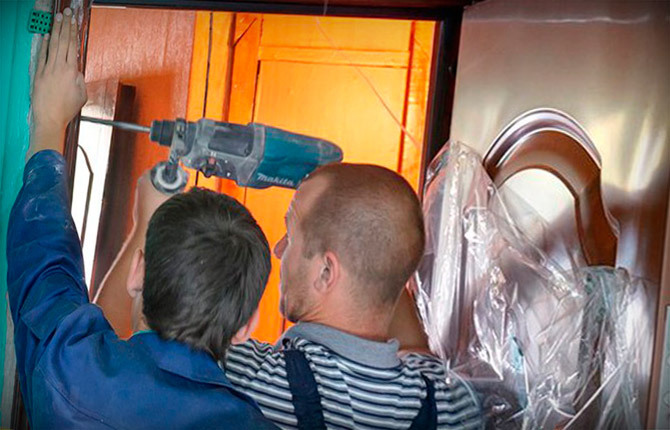To turn the house into a fortress, to make it warm, waterproof, helps insulated blind area - a strong decorative strip encircling the foundation. The simple design is designed to protect the foundation from rain or melt water, the ground from freezing, and also to keep the heat inside the building. Therefore, builders who know all the negative consequences of the lack of thermal insulation recommend paying attention to this stage of work when building a house.
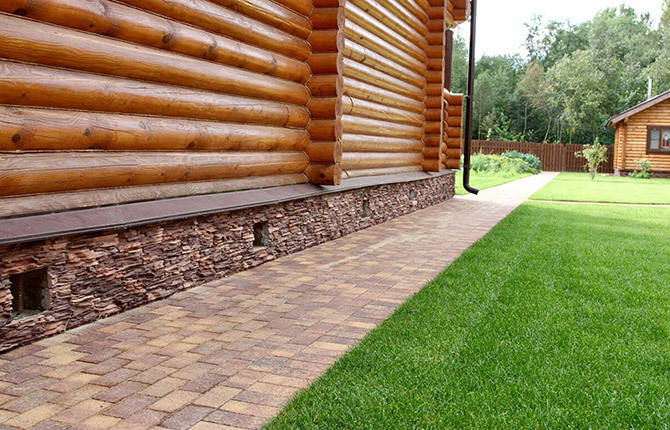
The content of the article:
- When is insulation needed?
- In what cases is insulation not required?
-
What material is suitable for insulation?
- Expanded clay
- Styrofoam
- polyurethane foam
- Penoplex
-
Features of installing an insulated blind area
- hard variant
- Soft construction
When is insulation needed?
Do-it-yourself insulated blind area is a separate stage of construction and installation work. A slightly sloping path limited in width, bordering the building along the perimeter, plays the role of a transition zone between the ground and the house. This area without proper finishing becomes a cold bridge that penetrates inside, significantly increasing the loss of precious heat. To prevent leakage, the installation of additional thermal insulation is required.
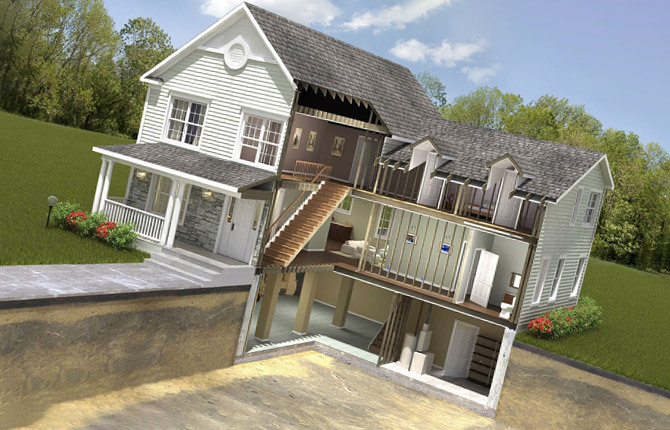
For many, such events seem unnecessary, but the insulated blind area around the house with their own hands plays an important role:
- It diverts water flows from the foundation of the building, allowing it to flow in the opposite direction.
- Significantly reduces heat loss, protecting the underground and basement of the house.
- Replaces the pavement, ensuring unhindered movement near the walls.
- Gives the building and surrounding area an impeccable look.
At the same time, the insulated blind area allows the ground warmed up during the summer season to maintain a positive temperature longer, helping to better and longer retain heat inside the building. As a result, the cost of building an insulated blind area helps save on heating a house for more than one year.
Useful: How to make a blind area around the house with your own hands
In what cases is insulation not required?
Many owners do not know whether it is really necessary to insulate the blind area. Although sometimes this stage can really be skipped and instead of an insulated one, lay a regular track.
Blind area insulation is refused if:
- reliable insulation of the foundation of the house;
- the building stands on solid and stable ground with minimal seasonal movements;
- a pile-grillage foundation was chosen for the base, reliably protected from frost heaving.
The construction of an insulated blind area can be neglected if the building was erected on a deep foundation, and the soil layer of the base is located below the freezing level.
Healthy: Warming of a private house from the outside. Insulation for the walls of the house outside
What material is suitable for insulation?
When choosing an outdoor covering, blind areas usually take into account the design preferences of the owner of the house, material properties, construction technology. For aesthetic design and protection of the house from external influences, the following types of coatings are used today:
- concrete;
- from crushed stone and gravel;
- lawn grass;
- paving stones;
- paving slabs;
- porcelain tile.
The insulated blind area provides for the laying of an additional heat-insulating layer. The ideal "candidate" should be different:
- high thermal insulation characteristics;
- low moisture absorption;
- resistance to fungus, living organisms;
- long service life.
Unfortunately, not all materials intended for the installation of an insulated blind area meet these criteria.
Therefore, the following types are most often used:
- expanded clay granules;
- foam sheets;
- sprayed polyurethane foam;
- extruded polystyrene boards.
In order not to miscalculate with the purchase of a heat insulator for the construction of an insulated blind area, you need to familiarize yourself with the main contenders in detail.
Expanded clay
If you choose the material taking into account the simplified installation scheme, you can be sure that expanded clay has no competitors. Small, round, porous granules obtained by firing clay or shale are easy to lay: they fall asleep in a trench on a previously leveled and compacted pillow so that the height of the expanded clay layer is about half a meter.
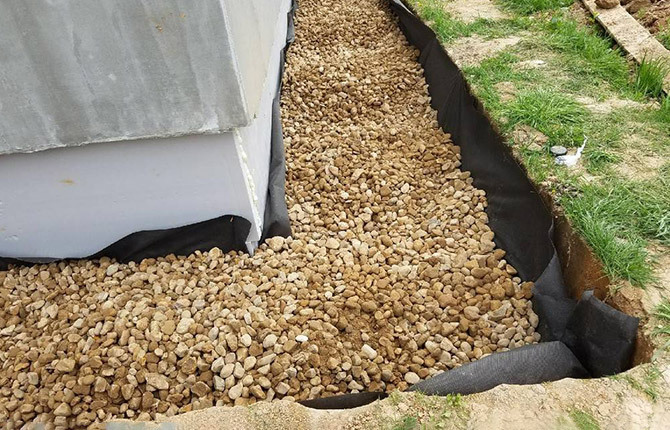
Other advantages of expanded clay:
- low specific gravity;
- fire safety;
- biological resistance;
- non-toxicity;
- ability to withstand prolonged loads;
- ease of use.
Creating a decorative path using expanded clay granules is the best option in terms of material costs. However, the material also has a drawback - high moisture absorption. Therefore, the laying of expanded clay is always carried out with an additional layer of high-quality waterproofing.
Styrofoam
A fairly common lightweight insulation, ideal for creating an insulated contour around the house with your own hands. It is characterized by low cost, excellent thermal insulation properties, ease of installation.

The benefits of foam:
- does not require a deep foundation;
- reduces the cost of space heating;
- increases the service life of the insulated blind area, foundation and the building itself.
However, the heater has several disadvantages:
- absorbs water;
- provides a suitable habitat for rodents;
- under the influence of frost, it becomes brittle, as a result of which it quickly collapses.
Professionals rarely advise using foam when arranging a path around the perimeter of a building, indicating that there is no need for additional waterproofing.
For you: Wall insulation with foam.
polyurethane foam
A relatively new, but quite effective liquid heat insulator has gained popularity due to its ability to adhere to any surface. Contained in pressurized containers, applied by spraying. Due to the absence of seams, it does not allow moisture to pass through, so it does not need additional waterproofing.

Other advantages of PPU:
- retains heat for a long period;
- not subject to decomposition and destruction;
- withstands maximum temperature differences;
- not afraid of exposure to fire and aggressive compounds (salts, alkalis);
- has low moisture absorption;
- resists biological action.
The construction of a functional contour around a house with polyurethane foam insulation is relatively expensive due to the high cost of the material and installation services, therefore, when erecting the blind area on its own, it does not use popularity.
Penoplex
Extruded polystyrene foam - the best option for warming a decorative track. The material is used where other insulators do not cope with the task assigned to them.

Penoplex has a lot of positive qualities, including:
- high density, elasticity;
- ability to withstand significant loads;
- resistance to temperature extremes, maximum positive and negative temperatures;
- high resistance to fire;
- environmental Safety;
- relatively low weight;
- long service life.
The plates are joined using the tongue-and-groove method to ensure maximum fit of the edges and tightness of the seam joints.
For you: Is it possible to insulate a wooden house from the outside with penoplex
Features of installing an insulated blind area
The construction of a path along the walls of a built house, with certain building skills and detailed instructions, can be done independently. But since the work will require physical effort, it is better to choose in advance the most suitable design of the insulated blind area.
hard variant
This type of blind area provides for an exterior finish using concrete or an asphalt concrete mixture. The design is highly weather resistant and has a long service life.
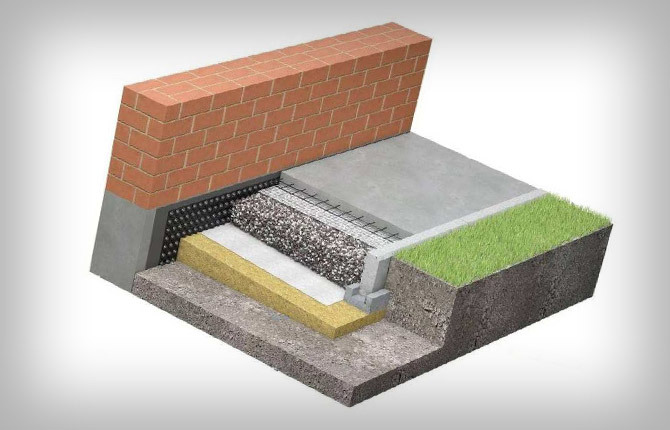
Creating an insulated blind area of this kind with your own hands is not difficult, given a few nuances:
- For casting a monolithic base, frost-resistant concrete of the M250-300 grade is taken. And to prevent cracking, pouring is performed at a time.
- Before pouring the concrete mixture, the insulated blind area is reinforced with reinforcement rods or reinforcing mesh.
- If the base of the blind area is trimmed with decorative material: tiles, paving stones, stone, the gaps are filled with a bitumen solution, and not a cement mixture, which quickly cracks with frequent contact with water.
If you ignore these tips, in a year the insulated blind area will become unusable, which will increase heat loss and entail additional costs for repair work.
Soft construction
This version of the insulated blind area is considered more reliable if the house is built on movable, prone to swelling soil. Such a structure, the top layer of which is made of pebbles, lawn grass or paving slabs, is assembled according to a simplified scheme, moreover, it is resistant to fluctuations in soil layers.
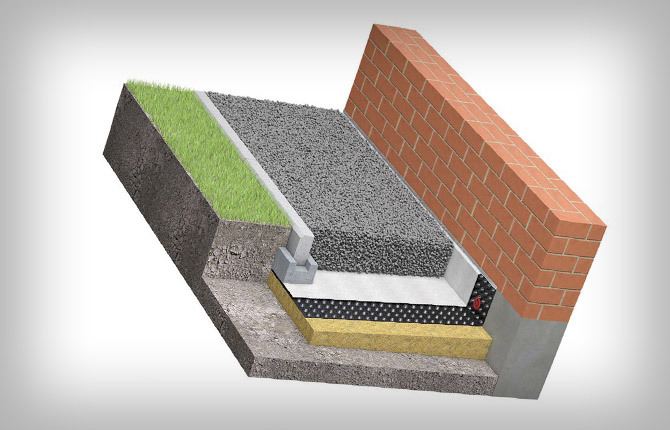
The soft design of the insulated blind area provides for the use of high-quality drainage in the “pie”, in particular, a profiled membrane. She:
- does not undergo deformation and damage during swelling of the soil;
- withstands the lowest negative temperatures;
- has high moisture resistance;
- removes moisture from the foundation;
- has a long service life;
- easy to install.
In addition, a soft insulated blind area, compared to a concrete one, is more economical and maintainable.
When constructing an insulated blind area around the building, the “pie” is assembled in a certain sequence and in strict accordance with the instructions. To get reliable coverage, you should consider some recommendations:
- If the soil is clayey, the depth of the trench should be about half a meter. On loose soil, it is increased to 600 mm.
- To stabilize loose moving soil, a layer of well-dried clay is laid. The ramming of the clay "protection" is carried out under a slight slope in the opposite direction from the building.
- One of the components of the "pie" of the insulated blind area is sand. The role of the material is to make the site as even as possible before laying the heat insulator, so its amount can be arbitrary.
- High-quality leveling of a clay or sand layer can be achieved if a vibrating plate is used to compact it.
- Since sand (sea, river) has increased flowability, it is recommended to mix it with loam. This will make the mixture denser and increase its degree of water resistance.
- The thickness of the heat-insulating material during the arrangement of the insulated blind area is selected in such a way that it can retain the heat of the earth for a long period. For central Russia, this figure is: for the track - 100 mm, for the foundation - 50 mm.
- The height of the edge of the insulated blind area adjacent to the base of the house must be at least 30 cm in order to ensure the removal of melt or rainwater in the opposite direction from the foundation.
The device of an insulated blind area around the perimeter of the house plays an important role in strengthening the foundation, maintaining heat in the house and basement, which is especially important for residents of regions with severe climate. But in order for the insulated platform to fulfill all the functions assigned to it, it is necessary to sheathe the foundation and the basement of the house with heat-insulating material. And then the question: why insulate the blind area, will disappear by itself.
Related video:
Do-it-yourself budget blind area
Correct blind area. All stages
What do you think: is it necessary to spend money on the construction of an insulated blind area, or is it better to save money and put a regular path? If the article turned out to be useful, add it to your bookmarks, and share the link to it on social networks and on thematic forums. Write in the comments if you had to deal with heat leaks due to the fact that the blind area remained uninsulated, and which heat-insulating materials seem to be the most effective.

